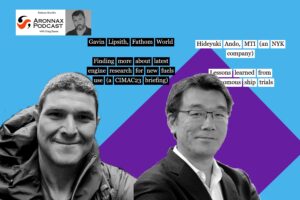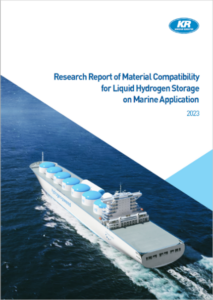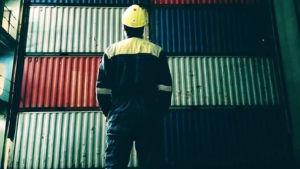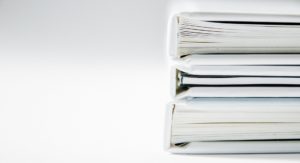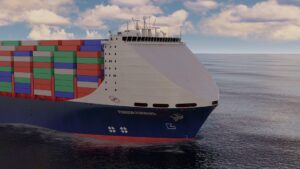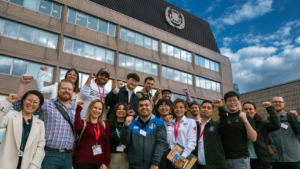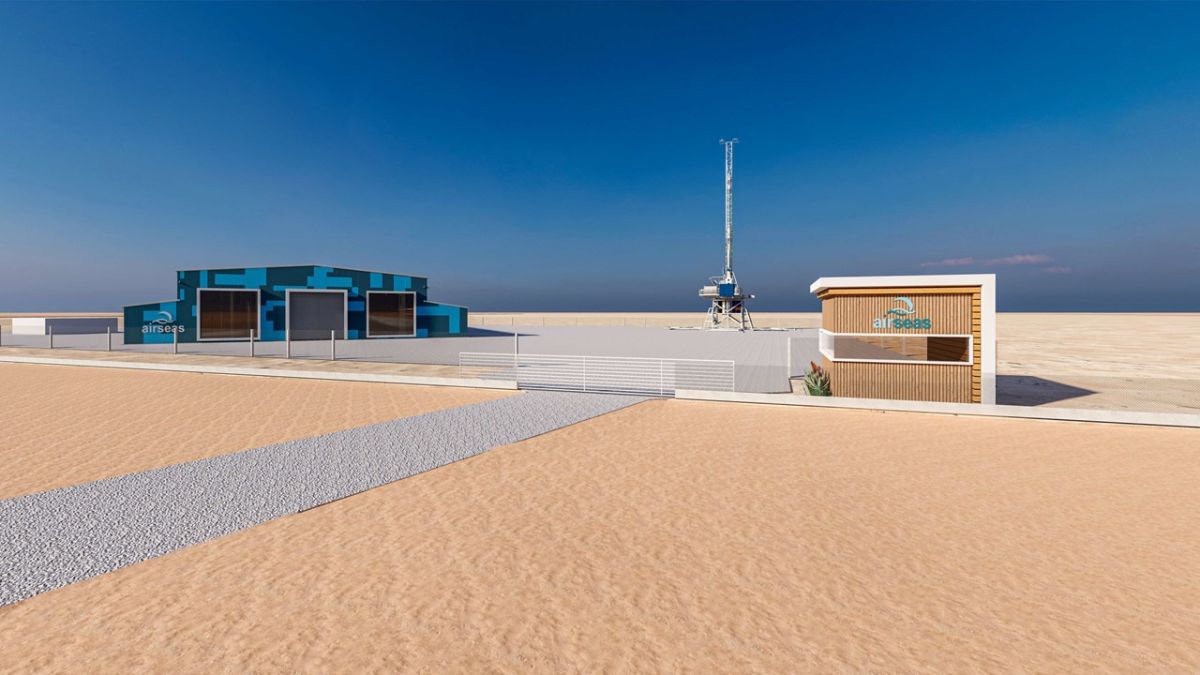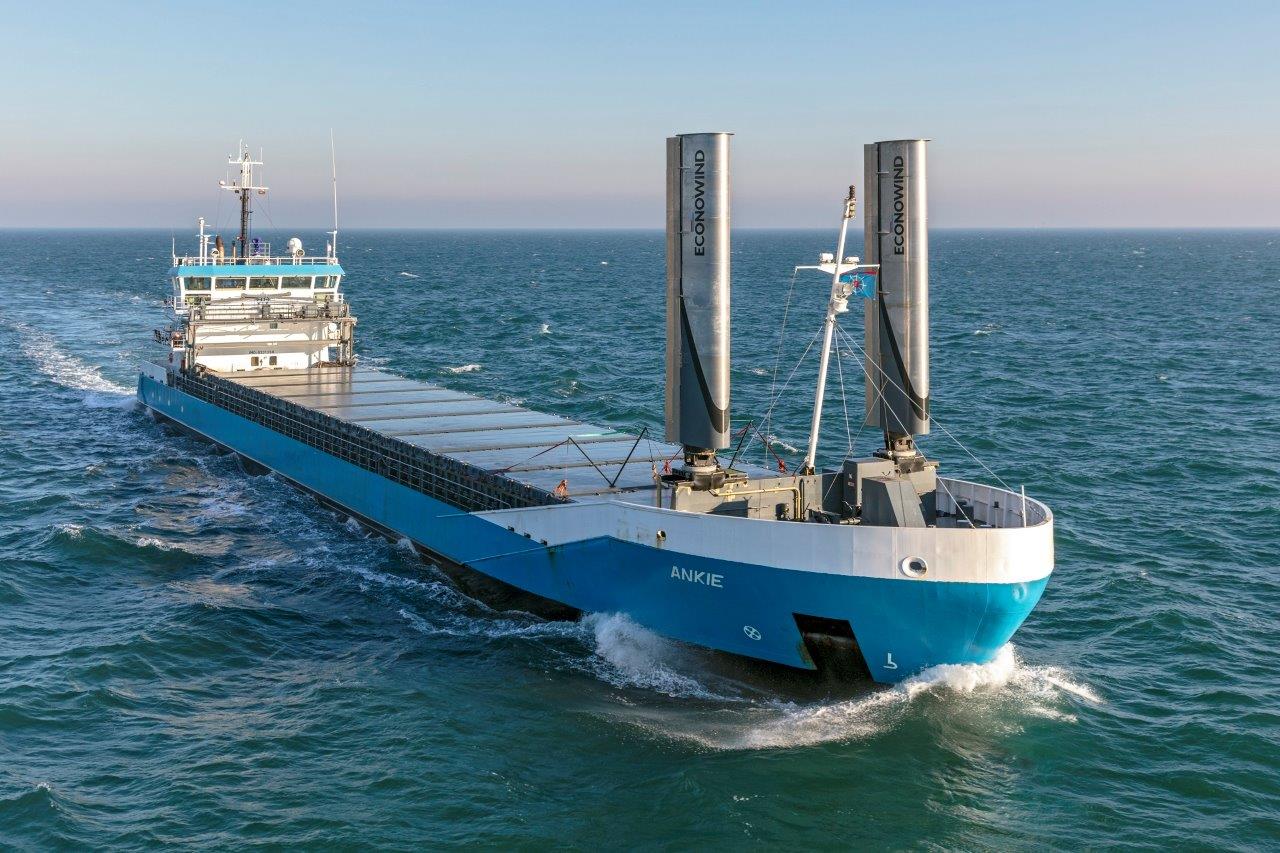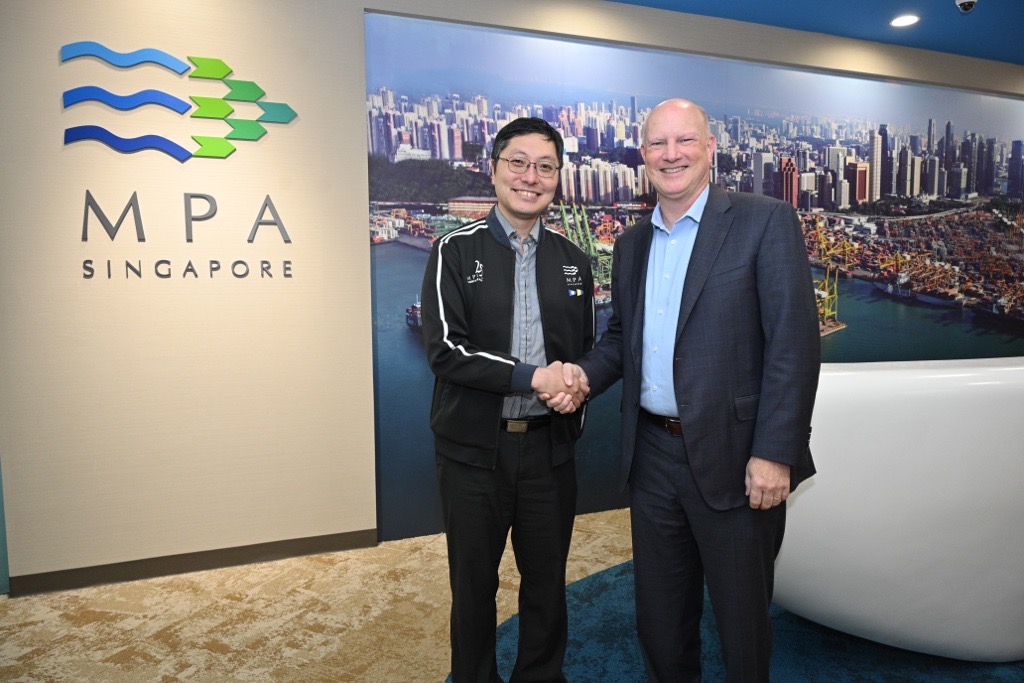Episode transcript
Alex Caizerguesis
“The Scirocco team is all about mixing the navall nary time sports and the tech, the big data environments. We have a not a crazy project, but very ambitious speed record project. And we are using it to drive innovation and and drive innovation that matters to help decarbonize the maritime transportation world”
Craig Eason
That is Alexandre Caizerguesis a Frenchman from Marseille with a love of speed.
He is a world champion and once the fastest man on water, having travelled at more than 107km/hr using a kite and board. If you have never seen kite surfing it is a combination of paragliding, surfing and windsurfing all wrapped into one exhilarating ride.
It has now become a major competitive sport where competitors battle it out for maneuvers including high jumps and speed and if you are in the shipping industry tou may be familiar with a brace of companies developing similar shaped solutions to be used to power shipping using the wind.
Now, Alex is still the fastest man on a kite board, but he lost the outright speed record to a sailing vessel called the Vestas Sailrocket, a prau like torpedo that has set a new record of 65 knots of 121.1 km per hour.
So he now wants to reclaim this tile, but to reclaim the outright sailing speed record he has ditched the kite board, and developed something far more radical – I will come to that in a minute.
But in doing so he and his team have developed a tool which they say can be used in the shipping industry, not to make ships go faster of course, but to assess how they can be designed or retrofitted to go more efficiently with better lines suitable for wind and water.
This is the Aronnax Podcast, and I am the host Craig Eason, also owner and editor of the Fathom World Website. In this episode of the podcast we are looking at how a world speed champion is working to get his title back, and found in the process a tool which he believes shipping can use as they develop and design, retrofit and build ships that are able to meet the emissions and efficiency goals they are being set.
Alex Caizerguesis grew up in south of France and grew in love with kite surfing in the strong winds found on the French Mediterranean coast
Alex Caizerguesis
“it’s a place where it’s where the Mistral, the very famous Mistral wind is blowing. Sometime sometimes crazy. And, and yeah, it’s, I think it’s because I grew up there, and I learned to kite there, I was really used to strong winds. So I start with some friends, trying to go fast, because it was funny.
We have a place there are with very flat water and strong wind. So basically, either you can jump, that’s what we were doing, like a hobby, and then we try to go fast. And we had some very interesting times on the GPS on the GPS watch. saying like, why shouldn’t why we shouldn’t try to compete. So I start competing, doing competitions against other guide, kite surfers, and I was not too bad.
So I tried to, to go in, to participate in as many competitions as I could. And then I yeah, I became faster and faster. And then the idea came into my mind that maybe we could, we could set a new sailing speed record, a new kitesurfing speed record, then outright or absolute sailing speed record, and that what we did first in Namibia, and then and then in France.
Craig Eason
He gained the speed record, kite surfing along man made ditches in the flat sands of Namibia and France , but now he wants to go much faster, and to do that he has had to think radically different
But such a task is not going to be easy… so what they have designed is as close to NOT being a sailing vessel as one could imagine. This is no longer an attempt to gain a kite boarding speed title, but to become once again the fastest human on water using natural forces.. the wind, and to shatter the current speed record and achieve 150km per hour.
So they have ditched the board and gone for a pod, which looks more like the fuselage of a fighter jet albeit without wings and tail.
There’s still a kite,attached with a long wire tether above it. Below it will be another wire tether going into the water at the end of which is an anchoring foil, airplane shaped, to move smoothly through the sea, it’s objective is to keep the pod close to but not on the water surface and offset the kite’s upward pull while amplifying the forward momentum.
To be a sailing speed record the pod will have very little else in it. No batteries, not many aids at all. However, the prototype they are currently using does, and it is the development of this that has led the development of a software tool that Alex and is Syroco team now believe has a wider use than just achieving speed.
Here he takes up the story along with Syroco cofounder Yves de Montcheuil
Alex Caizerguesis
“We started really at the beginning of Siroco, we started with a blank page, we did a brainstorm with a part of the people we have in our team today, and experts from the Americans cup from the backlighting world, passionate people, enthusiasts experts in their domain that could bring their expertise in. Yeah, that, that open, open field to innovation. And, and with just a quick, just a simple question at the beginning how to go fast on water propelled by the wind you have, you can you can take whatever you want as a solution for the guides a sail, to find the Yeah. All of the concepts that could be used to go to go fast on water, and we ended up with a list of like something like 50 different concepts.
And we started to evaluate them, trying to find which one will be the most efficient, energy efficient one. So we we created a program called the VPP velocity predictor program that will help us evaluate which was the most efficient, according to of course, according to our operational operational constraint, or what’s the name in English for “Que deCharge”requirements, being be able to go on in open sea, being being able to go Patek and stuff attack, be able to jive with the concepts. Remember that I coming from the kitesurfing world where to go fast, we need a trench, so eight meters wide canal. So it was one of the requirements It was to be able to go in open sea, and not being stuck into a canal. And so we add the safety concept, we created the VPP, we use the VPP to evaluate which one which one was, which was the most efficient. And then how to design the different parts, the capsule, the size of the fold the size of the guide, and the program or was resolving the balance, reserving the equilibriums.
Or I don’t know if we can, if we can say that, but and we ended up with that concept of a flying capsule hanging between the propulsion of a kite and the propulsion underwater of an inverted foil . For us, it was the most efficient energy efficient one, and the one was the the biggest potential. And we design it to reach that, that speed of 80 knots.
Craig Eason
So how does this lead you to engaging with the maritime industry with the shipping industry? What is that journey, then from looking at a speed record to looking at how you can actually find a solution to go into the maritime sector, a sector which is traditionally slow in actually changing and adopting, but is beginning to use more and more data
Yves de Montcheuil
there are actually two very different answers to that question. The first one is the Why and the second is the is the How the Why comes from the is really engraved into the DNA of Syroco. And this is the project that Alex and his partners are wanting to build. It’s to use the pioneering achievement, the speed record, as a way to generate innovation.
So speed is not a goal in itself. Alex has plenty of that he has been fast since he was he was little and so now the question is beyond the speed record how we’re actually how do we use the speed record as a way to generate innovation that brings purpose and that is useful for for the planet that’s useful for the for the energy transition.
So the how then. The how is actually quite simple. The Annex describe the design process that we use to ship to ship through those 50 concepts and to understand which ones were the most efficient, and there was no software that allowed us to do that. So when we actually had to build the software, we had to build the algorithm that will process the physics of those of those designs, process the data, and tell us which ones to throw away, which ones to refine, to go further into simulation, etc.
And that’s when we thought and that’s, that was really a gradual process. I mean, we knew from the standard that we wanted to apply that, but we didn’t know how what first. So that’s part of the innovation. Along the way, we, we saw a path where we could take those algorithms and apply them to different types of shapes, because of speed craft is a selling yield. It’s a pretty typical one. But basically, it’s a setting yields. And we have been thinking, Okay, so what’s in common between that statecraft and any type of boat where they go through water at very different speed, but they are there is friction, there are forces, there is the impact of wind on the superstructure on the sail, there’s the impact of waves of swell. And all of that, as you know, because seen on your profile, you’ve been, you’ve been a sea captain. So you know that a boat goes a lot slower when they swell and uses a lot more fuel than when the seas come.
So we were thinking, when if we could actually build that into a model, the same way we build the model of our speed craft, and then use that to measure the actual efficiency of a ship based on the conditions the is evolving into.
So we took those algorithm, and we use them to build models of shapes of this propulsion systems, the engine, the the sails, guides, anything that you can add, to worship to make it more efficient. And we have built essentially a platform of something that’s called a digital twin, that reproduces the behavior of the ship on the computer, and would allow anyone to play scenarios.
So if I take this ship with this type of configuration, and I sail her from Singapore, through Marseille, with a sell date of April 14, for example, oand the voyage is expected to take so many days, what will be the power consumption of that shape?
But if I take the century, and I add, I don’t know, six, solid says, or two guides, or maybe a hybrid engine, fuel plus hydrogen electric, and I run are on the same route, same dates, what will be the energy consumption? What is the difference between the two? What is the setting and the settiis both monetary. And in terms of carbon initiatives?
Craig Eason
I’m aware that there’s a lot of different companies that are using digital twins now and offering digital twins to for maintenance. And dare I say it for performance, but there’s a British company as well called bar bottoms analogies.
I think they’re doing something similar to you. Yeah. And they are coming from the America’s Cup. They company America’s Cup, as well. So do you understand what I’m saying? So the how to bring that USP out.
Yves de Montcheuil
Yeah, so. So I agree with you, the concept of digital twin is becoming more and more popular.
It was primarily born from maintenance issues, trying to understand the warehouse here and try to do predictive maintenance instead of fixing things when they break. And digital twins are super effective at that.
The good news is that it’s becoming more and more commonplace and people understand what a digital twin is, that’s not necessarily the case a couple years back. So how different we are from others?
So first, we are not looking at at maintenance, we are not looking at building a twin of the electronic systems of the engines or whatnot of the ship, we are purely looking at it from a performance and energy efficiency point of view, building on the law of physics. Now, that’s probably the most important thing.
Of course, we will use IoT data as the purple button to the performance of the ship. So for example, wind capture, having RPM capture on the on the engine can be super useful. But we are not looking at that purpose primarily, we are looking at the physics and how they apply.
What we’ve done is that we are incorporating into our models, the CFD simulations, you’re familiar with the with the CFD, both off the ship in water, the shipping, air, also the impact of wind on the on the superstructure, the sails in the air, the interaction between sails.
So this is what we’re focusing on is understanding the physical behavior of every component of the ship, and understanding their interaction and how the forces are going to add up or oppose themselves or interact with one another for the behavior of the ship.
And that I don’t think there are a lot of people were looking at that on the on the market, I know, we’ve taken a look at Bar’s offering, they are probably the closest on the market to what we have, I don’t know if they have slightly different value proposition is there on the on the same segment. It’s still a very nascent market.
And when we talk to shipyards to shipping companies, they’re usually saying thing to us “Well, we don’t really know if there are solutions that can do that. We’ve been thinking about doing manually about engaging armies of CFD engineers to do the calculation”.
So it’s still probably a very, very young market.
Craig Eason
Alex Caizergues along with fellow Syroco cofounder and startup adviser Yves de Montcheuil on the plans to use the software they developed to help design a world speed record system and develop it into a CFD and digital twin tool to help make shipping more efficient and cleaner.
The attempt to set a new speed record will be in the summer next year. They are still using the prototype and the software to make improvements and looking at the videos they produce you can see the underwater foil is more solidly fixed to the pod than the final set up will likely be.
Gaining the speed record is a moonshot for Syroco, but they have other moonshots in mind.. take inspiration from Bernard Picard’s famous record with a solar plane….
That’s it for this episode of the Aronnax podcast, please remember to share, subscribe and like. I have a growing archive of episodes over the last couple of years looking at the transportation of the shipping and maritime space. Also you will find more stories on these themes on the Fathom.World website.
Goodbye for now
More Aronnax episodes
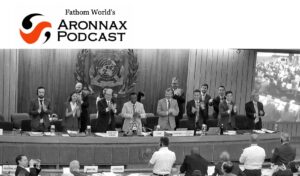
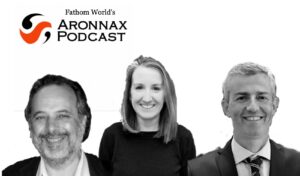
Aronnax: July 3rd
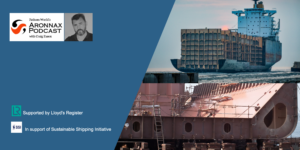
Aronnax: June 29th – Ships and their steel: Turning it green
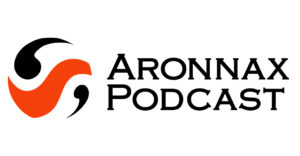
Aronnax: June 19th

Aronnax: June 4th
